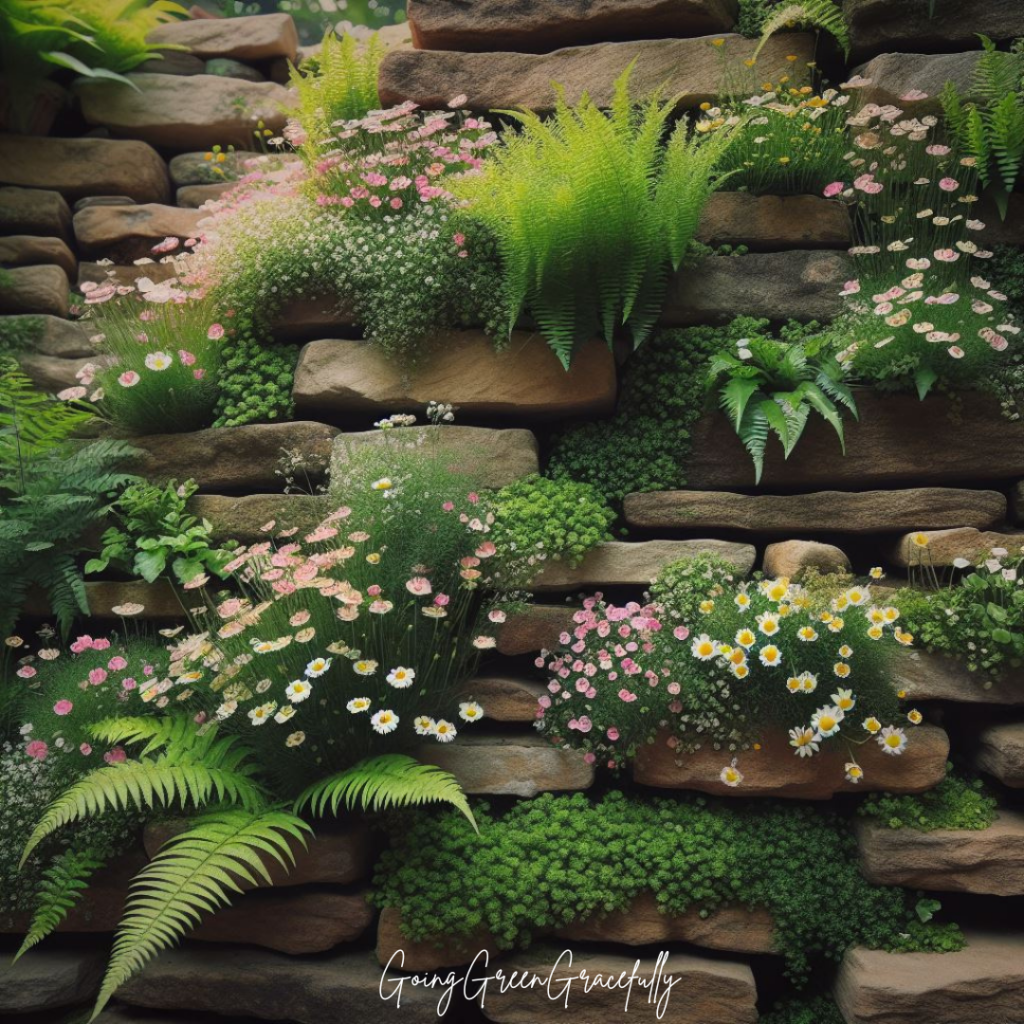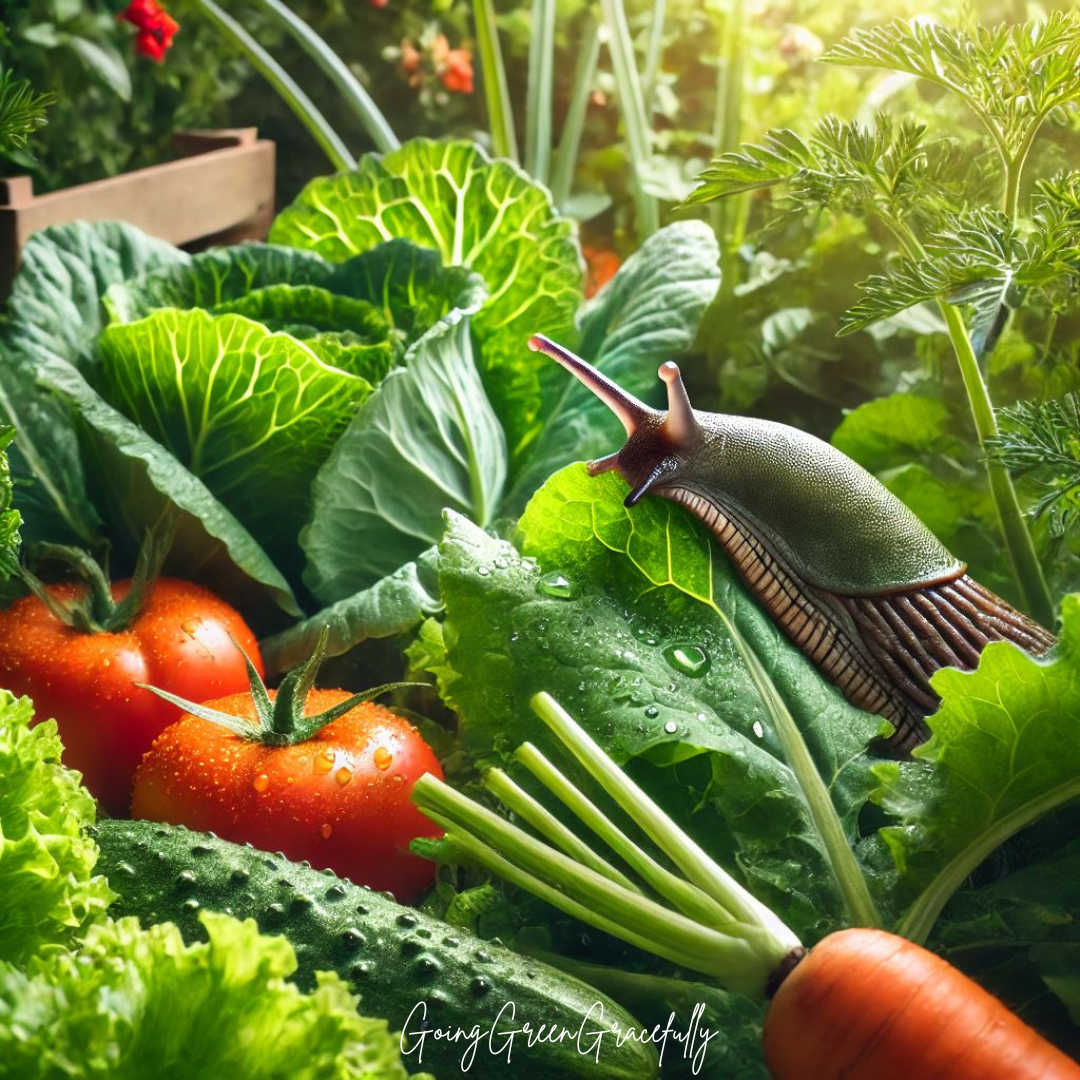
I love the stacked stone retaining wall in my garden, but it is a haven for snails and slugs. After living and gardening here for three years, I have come to learn that coexisting with these creatures requires ongoing effort and adaptation, and I am slowly and starting to embrace the challenge of gardening alongside them.
I bought my house because of the garden. On my first viewing, I fell in love with the ancient stone retaining wall that lines one side of the 75-foot long space. The rustic wall evoked memories of walking holidays in the Pennines, and I could not wait to plant it up with ferns, colourful grasses, and cascading pastel flowers. Novice gardener that I was, I had no idea that the hundreds of nooks and crannies created by those stacked stones were perfect incubators for thousands of baby molluscs.
And I mean thousands, no exaggeration. My garden is literally snail and slug city. The first year, I barely noticed the little creatures. A previous owner had planted up the retaining wall bed with a mix of Mediterranean herbs, hardy geraniums, and an established wisteria. The rest of the garden was given over to lawn, a few rose bushes, and on the opposite fence, a clotted cream jasmine with the most incredible scent I have even encountered. I spent the first delightful spring and summer in the garden tending to these legacy plants and drawing up plans for the garden I hoped to create.
Fast forward to year two. I had determined that I would like to grow some vegetables, and so spent most of the winter building two brand new raised beds and filling them with compost. As a new gardener, I figured that I would fare better with established seedlings rather than try to grow my own from seed. And so as the weather started to warm up, I trudged off to the garden centre and retuned with a haul of vegetable seedlings. I planted them out in neat alternating rows: peas, beans, brassicas, beetroots, leeks and lettuce, watered them in, and settled down to wait on nature to do her thing.
Nature did do her thing, but it was not what I had expected. Within a couple of days of planting out the tiny but lush seedlings, hoards of tiny snails and slugs descended with their raspy little teeth and voracious appetites. By day four, most of my seedlings had lost all their leaves. By the end of the week, even the little stems were gone. My beds were completely bare. That was my introduction to vegetable gardening in the UK.
I have since tried every trick in the book to deter the little creatures. Every trick except chemicals, that is. I pride myself on being a wildlife friendly gardener, and so using pellets is out of the question, but I have tried just about everything else. I am a long way from defeating the molluscs, but I did however manage to grow a successful crop of vegetables in 2024, a year that many gardeners claim was one of the worst for snails and slugs. So, it looks like I am gradually learning to co-exist with these exasperating but incredibly resilient creatures. Click here to read about some of the ways I manage my snail and slug problems.

So what did I do, and what have I learnt? The first and most important lesson has been that there is no one strategy that will work to keep molluscs in check in a garden like mine. Several mutually reinforcing methods are required. I use a combination of biological control, mechanical barriers and old fashioned capture and relocation. Click here to read more about my multipronged approach to controlling snails and slugs in my garden.
The second lesson is that the war against slugs and snails is never over. As we head into winter, I am already plotting my battle strategy for spring, and will keep adjusting as we go through the year, based on observations of the mollusc population.
Lastly, I have learnt that there is room for all in my garden. The snails and slugs may be a source of exasperation, but they are part of nature, and have a right to be here. I am proud to say that I have never yet intentionally killed a slug or a snail. It is possible to enjoy beautiful flowers and vegetables without resorting to being cruel to the little creatures that share our spaces.
Bring on spring – slugs, snails and all!
